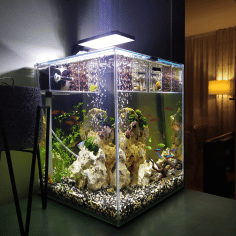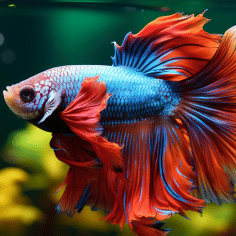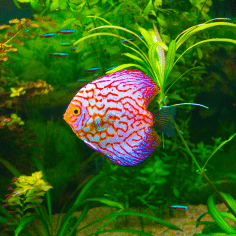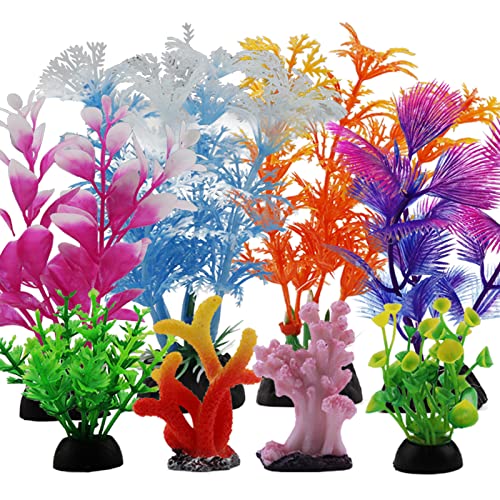Saltwater Fish Angelfish, known for their vivid colors and unique patterns, thrive in coral reefs. These fish are native to the Indo-Pacific and Atlantic Oceans, where they navigate through intricate coral structures. Angelfish species vary in size, shape, and color, offering a captivating display for enthusiasts.
They require specific water conditions to mimic their natural habitat for optimal health. These fish are often territorial, so they need adequate space in aquariums. Maintaining a balanced diet, including algae and marine-based foods, ensures their vibrant colors and longevity. Saltwater Fish Angelfish add a dynamic, beautiful element to marine aquariums, captivating both novice and experienced aquarists.
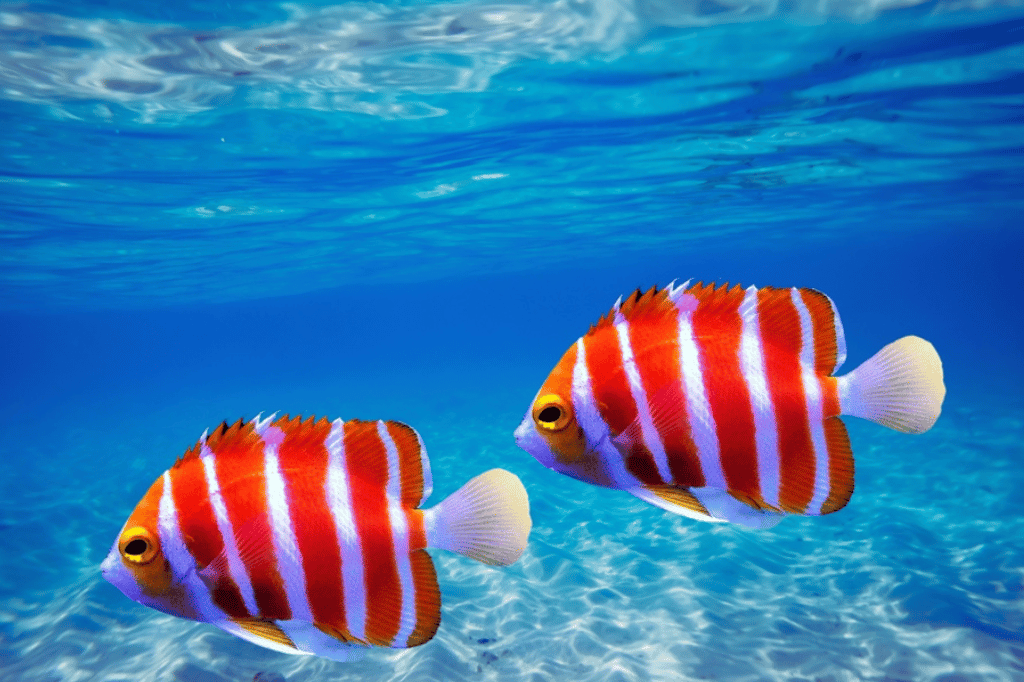
Saltwater Fish Angelfish Care: Tips for Thriving Tanks by Insiderfish.com
Saltwater Fish Angelfish Basics
Saltwater fish angelfish are some of the most beautiful and vibrant creatures in the ocean. Their stunning colors and unique patterns make them a favorite among aquarium enthusiasts. Understanding their basic characteristics, natural habitat, and behavior is crucial for anyone interested in keeping these magnificent fish.
Species Variety And Characteristics
Saltwater fish angelfish come in many different species, each with its unique traits. Here are some popular species:
- Emperor Angelfish: Known for its striking blue and yellow stripes.
- Queen Angelfish: Recognizable by its royal blue body and yellow tail.
- French Angelfish: Features a dark body with yellow-ringed scales.
These species vary in size, color, and behavior. Most angelfish are medium-sized, ranging from 4 to 12 inches in length. They have laterally compressed bodies, making them agile swimmers in coral reefs.
Natural Habitat And Behavior
Saltwater fish angelfish inhabit warm, tropical waters. They are commonly found in the Atlantic, Indian, and Pacific Oceans. These fish prefer shallow reefs, where they can hide among corals and rocks.
In their natural habitat, angelfish display fascinating behaviors:
- Territorial: They often stake out a specific area and defend it from intruders.
- Omnivorous Diet: Their diet includes algae, sponges, and small invertebrates.
- Social Structure: Many species form pairs or small groups for social interaction.
Understanding these behaviors helps in creating a suitable environment for them in home aquariums.
| Species | Average Size | Distinctive Features |
|---|---|---|
| Emperor Angelfish | 12 inches | Blue and yellow stripes |
| Queen Angelfish | 10 inches | Royal blue body, yellow tail |
| French Angelfish | 15 inches | Dark body with yellow-ringed scales |
Setting Up The Ideal Angelfish Tank
Creating the perfect home for your saltwater fish Angelfish can be rewarding. Angelfish are stunning and delicate creatures. They require a well-thought-out environment to thrive. Below are the key aspects to consider.
Tank Size Recommendations
Angelfish need plenty of space to swim. A minimum of 30 gallons is recommended for one Angelfish. For a pair, opt for a 55-gallon tank or larger. Bigger tanks help maintain water quality and reduce stress for the fish.
| Number of Angelfish | Recommended Tank Size |
|---|---|
| 1 | 30 gallons |
| 2 | 55 gallons |
| 3+ | 75 gallons or more |
Water Parameters And Quality
Maintaining the right water parameters is crucial. Angelfish thrive in water with a pH level between 6.8 and 7.8. The water temperature should be kept between 75°F to 82°F. Use a reliable heater to maintain consistent temperature.
- pH Level: 6.8 – 7.8
- Temperature: 75°F – 82°F
- Ammonia: 0 ppm
- Nitrite: 0 ppm
- Nitrate: Less than 20 ppm
Regular water changes help in keeping the water clean. Change 20% of the tank water every two weeks. Use a good water conditioner to remove chlorine and other harmful chemicals.
Aquascaping For Angelfish
Angelfish love a well-decorated tank. Use live plants to create hiding spots and mimic their natural habitat. Plants like Anubias, Java Fern, and Amazon Sword are excellent choices. Arrange rocks and driftwood to provide additional hiding spaces.
- Place plants at the back and sides of the tank.
- Add rocks and driftwood in the middle.
- Leave open swimming space in the front.
Ensure that all decorations are safe and smooth to prevent injuries to the fish. Avoid sharp objects in the tank. Proper lighting enhances the beauty of the tank and supports plant growth. Use a light that mimics natural daylight.
Essential Equipment For Angelfish Care
Keeping saltwater fish angelfish can be a rewarding experience. Their vibrant colors and graceful movements captivate any aquarium enthusiast. To ensure their well-being, certain equipment is necessary. This section covers the essential equipment for angelfish care. It includes filtration systems, lighting needs, and temperature control.
Filtration Systems
Angelfish thrive in clean water. A reliable filtration system is crucial. It removes waste, uneaten food, and harmful chemicals. There are several types of filtration systems available:
- Mechanical Filters: These traps debris and particles. They keep the water clear.
- Biological Filters: These house beneficial bacteria. They convert harmful ammonia into less toxic substances.
- Chemical Filters: These remove toxins and impurities. Activated carbon is a common choice.
Ensure the filter matches the tank size. Over-filtering can stress the fish. Under-filtering can lead to poor water quality.
Lighting Needs
Proper lighting is vital for angelfish. It mimics their natural habitat. Light supports plant growth and shows off their colors. Consider these lighting options:
| Type | Benefits |
|---|---|
| LED Lights | Energy-efficient, customizable, and long-lasting. |
| Fluorescent Lights | Affordable, bright, and promotes plant growth. |
| Metal Halide Lights | High-intensity, ideal for deeper tanks. |
Keep the lights on for 8-12 hours daily. Use a timer for consistency.
Temperature Control
Angelfish need stable water temperatures. Sudden changes can stress them. The ideal range is 75-82°F (24-28°C). Use a reliable heater with a built-in thermostat. Consider these features:
- Adjustable Temperature Settings: Allows precise control.
- Auto Shut-off: Prevents overheating.
- Shatterproof Design: Ensures durability and safety.
Place a thermometer in the tank. Check it daily. Maintain a consistent temperature for healthy angelfish.
Diet And Nutrition
Saltwater fish Angelfish are stunning creatures that require a balanced diet. Proper nutrition ensures they remain vibrant and healthy. Let’s explore their feeding habits, the best foods for their health, and essential supplements.
Feeding Habits
Angelfish are omnivores. They eat both plants and animals. In the wild, they graze on algae, small invertebrates, and plankton. At home, provide a mix of plant-based and protein-rich foods.
Types Of Food For Optimal Health
To keep your Angelfish healthy, offer a variety of foods:
- Flake Foods: Specially formulated for marine Angelfish. Provides essential nutrients.
- Frozen Foods: Mysis shrimp, brine shrimp, and krill. High in protein.
- Algae Sheets: Rich in fiber. Helps mimic their natural diet.
- Fresh Vegetables: Spinach, lettuce, and zucchini. A good source of vitamins and minerals.
Supplements And Vitamins
Supplements play a crucial role in maintaining Angelfish health:
| Supplement | Benefits |
|---|---|
| Vitamins | Boosts immunity and enhances color. Add to their food. |
| Minerals | Supports bone health and overall growth. Essential for a balanced diet. |
| Probiotics | Aids digestion and promotes a healthy gut. Available in liquid form. |
Health And Wellness
Maintaining the health and wellness of saltwater fish angelfish is vital for their vibrant colors and active behavior. Angelfish can thrive with proper care, including disease prevention, stress management, and quarantine measures.
Common Diseases And Prevention
Angelfish are prone to several diseases. Common ones include ich, marine velvet, and fin rot. Early detection and treatment are key to maintaining their health.
- Ich (White Spot Disease): Caused by a parasite, it appears as white spots on the fish. Treatment involves raising the water temperature and using specific medications.
- Marine Velvet: This disease causes a gold dust-like appearance. Use copper-based treatments to cure it.
- Fin Rot: Bacterial infection leading to rotting fins. Improved water quality and antibiotics can help treat it.
Prevent these diseases by ensuring proper water quality, a balanced diet, and regular tank maintenance.
Stress Reduction Techniques
Stress can weaken angelfish and make them more susceptible to diseases. Implement these techniques to reduce stress:
- Maintain Stable Water Conditions: Keep the temperature, salinity, and pH levels stable.
- Provide Hiding Spots: Use rocks and plants to create hiding places.
- Avoid Overcrowding: Ensure enough space for each fish to swim freely.
- Minimize Loud Noises: Place the tank in a quiet area to reduce stress from vibrations and noise.
Quarantine Protocols
Quarantining new angelfish before adding them to your main tank is crucial. This practice helps prevent the spread of diseases.
| Step | Description |
|---|---|
| Set Up a Quarantine Tank | Use a separate tank with similar water conditions to the main tank. |
| Observe for 2-4 Weeks | Monitor new fish for signs of diseases during this period. |
| Medicate if Necessary | Treat any detected diseases before moving the fish to the main tank. |
| Gradual Introduction | Slowly acclimate the fish to the main tank’s water conditions before transferring. |
Tank Mates And Compatibility
Angelfish are stunning saltwater fish that captivate aquarists with their vibrant colors. Understanding their tank mates and compatibility is essential for a harmonious aquarium. This section will cover the best companions, species to avoid, and tips for introducing new tank mates.
Peaceful Companions
Angelfish thrive with peaceful tank mates. Some excellent options include:
- Clownfish: These fish are friendly and easy to care for.
- Gobies: Known for their calm nature, they make great companions.
- Blennies: These fish are non-aggressive and coexist well.
- Cardinalfish: They are peaceful and add beautiful colors to the tank.
Species To Avoid
Some fish species can stress or harm angelfish. It’s crucial to avoid the following:
- Triggerfish: Known for their aggressive behavior.
- Large Groupers: They can be territorial and predatory.
- Sharks: These species may view angelfish as prey.
- Dottybacks: Small but aggressive towards other tank mates.
Introducing New Tank Mates
Introducing new fish to your angelfish tank requires careful planning. Follow these steps:
- Quarantine new fish: Keep them separate for at least two weeks.
- Observe behavior: Ensure the new fish show no signs of illness.
- Acclimate slowly: Use a drip acclimation method to introduce them gradually.
- Monitor interactions: Watch closely for any signs of aggression or stress.
Maintaining a peaceful aquarium environment is key to the health of your angelfish. Choose compatible tank mates wisely and introduce them carefully.
Breeding Angelfish
Breeding angelfish can be a rewarding experience for any aquarist. It requires understanding their behaviors and needs. Proper care and environment can lead to successful breeding.
Identifying Sexes
To breed angelfish, you must identify their sexes. Males and females look very similar, but there are key differences:
- Males often have larger and more pointed dorsal and anal fins.
- Females have rounder bodies and smaller fins.
- During breeding, females display a visible ovipositor, a small tube for laying eggs.
Observing these traits helps in pairing the right fish for breeding.
Breeding Conditions
Creating the right environment is crucial for angelfish breeding. Follow these guidelines:
| Condition | Requirement |
|---|---|
| Water Temperature | Maintain between 78°F and 82°F |
| pH Level | Keep between 6.5 and 7.0 |
| Tank Size | Minimum of 20 gallons |
| Lighting | Moderate lighting to simulate natural environment |
Provide plants or flat surfaces for egg-laying. Clean water is essential for healthy breeding.
Caring For Fry
Once the eggs hatch, the fry need special care:
- Separate the fry from adult fish to prevent them from being eaten.
- Feed them with micro-worms or baby brine shrimp.
- Change the water frequently to keep it clean.
- Monitor their growth and gradually introduce them to larger foods.
Proper care ensures the fry grow into healthy adult angelfish.
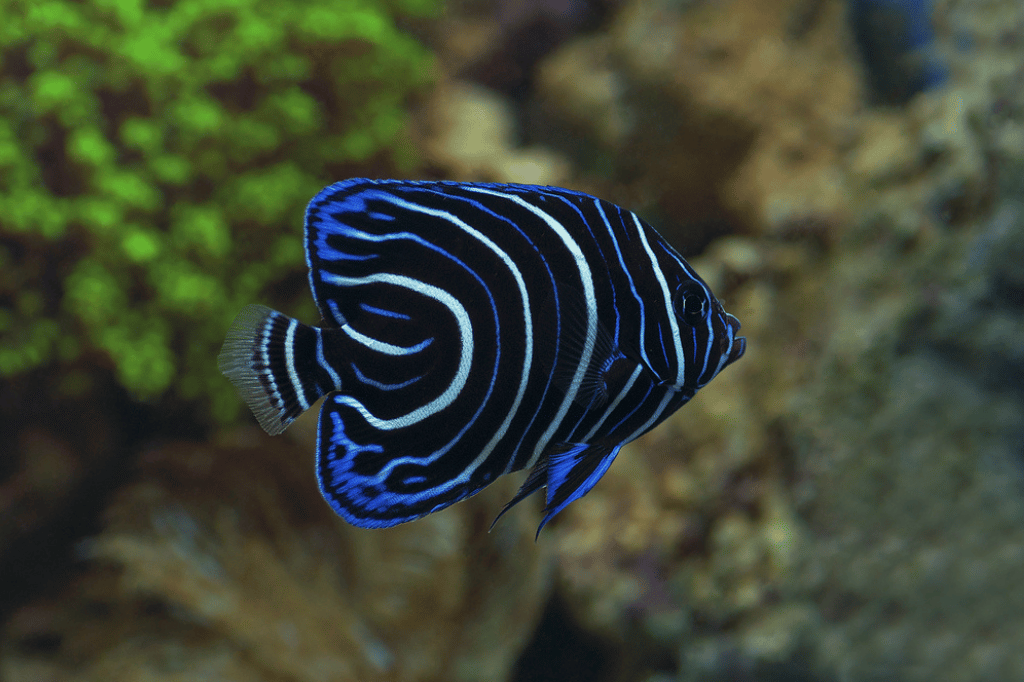
Maintenance And Care Routines
Taking care of your saltwater fish Angelfish involves consistent maintenance and care routines. These routines ensure your fish remain healthy and your tank environment stays optimal. Here’s how you can maintain and care for your Angelfish efficiently.
Regular Cleaning Schedule
Establishing a regular cleaning schedule is crucial. Clean the tank walls and remove algae weekly. Use an aquarium vacuum to clean the substrate and remove debris. Scrub decorations and rocks to prevent algae build-up.
| Task | Frequency |
|---|---|
| Clean tank walls | Weekly |
| Vacuum substrate | Weekly |
| Scrub decorations | Monthly |
Water Change Procedures
Performing regular water changes is vital. Change 10-20% of the water weekly. Use a gravel vacuum to remove debris during water changes. Always use dechlorinated water to replace the old water.
- Turn off all equipment.
- Use a gravel vacuum to remove 10-20% of water.
- Fill a bucket with dechlorinated water.
- Slowly add the new water to the tank.
- Turn equipment back on.
Monitoring Tank Health
Monitoring your tank’s health is necessary. Check water parameters weekly. Ensure the pH, ammonia, nitrite, and nitrate levels are within the safe range. Use a testing kit to monitor these parameters. Observe your Angelfish for any signs of stress or disease. Look for unusual swimming patterns, discoloration, or spots on the fish.
- Check water parameters weekly.
- Observe fish behavior daily.
- Look for signs of stress or disease.
Keeping an eye on these factors ensures a healthy environment for your Angelfish.
Troubleshooting Common Issues
Saltwater fish Angelfish are stunning creatures. But sometimes, they face problems in aquariums. This section helps you solve those issues. Follow the tips to ensure your Angelfish stay healthy and happy.
Algae Control
Algae can be a big issue in aquariums. Too much algae makes the tank look dirty. It can also harm your Angelfish.
- Reduce light: Use a timer to limit light to 8-10 hours a day.
- Clean regularly: Scrub the tank walls weekly.
- Add algae eaters: Fish like snails can help control algae.
| Problem | Solution |
|---|---|
| Green Algae | Reduce light exposure |
| Brown Algae | Increase light and clean filter |
Behavioral Problems
Angelfish can show strange behavior. They might chase each other or hide often. Understanding these behaviors is key.
- Aggression: Use a larger tank and add more hiding spots.
- Hiding: Check water quality and reduce stress factors.
- Not eating: Try different types of food and check for illness.
Always monitor your fish. Quick action can prevent serious issues.
Equipment Failures
Equipment failures can harm your Angelfish. Filter and heater problems are common.
- Filter issues: Clean the filter monthly to ensure it works well.
- Heater problems: Use a reliable heater and check the temperature daily.
- Lighting issues: Replace bulbs every 6-12 months to maintain proper lighting.
Invest in good quality equipment. It ensures a safe environment for your Angelfish.
Advanced Tips For Expert Care
Angelfish are stunning saltwater fish that require expert care. To keep them thriving, you need advanced techniques and knowledge. Here, we provide you with essential tips for their optimal care.
Fine-tuning Water Chemistry
Maintaining precise water chemistry is crucial for Angelfish. Here are the key parameters:
| Parameter | Ideal Range |
|---|---|
| pH | 8.1 – 8.4 |
| Salinity | 1.020 – 1.025 SG |
| Temperature | 72°F – 78°F (22°C – 26°C) |
| Ammonia | 0 ppm |
| Nitrite | 0 ppm |
| Nitrate | < 20 ppm |
Regularly test and adjust these parameters to keep your Angelfish healthy. Use high-quality test kits for accuracy.
Targeted Feeding Techniques
Angelfish have specific dietary needs. Follow these targeted feeding techniques:
- Feed a varied diet of frozen, live, and prepared foods.
- Include marine algae and spirulina for balanced nutrition.
- Offer small, frequent meals to mimic natural feeding habits.
- Remove uneaten food after 5 minutes to maintain water quality.
These practices ensure your Angelfish receive the nutrients they need.
Creating A Reef-compatible Setup
Angelfish thrive in reef-compatible setups. Follow these steps:
- Choose reef-safe corals and invertebrates.
- Provide plenty of hiding spots using live rock.
- Maintain strong water flow and adequate lighting.
- Ensure tank mates are compatible and non-aggressive.
A well-planned reef setup keeps your Angelfish stress-free and healthy.
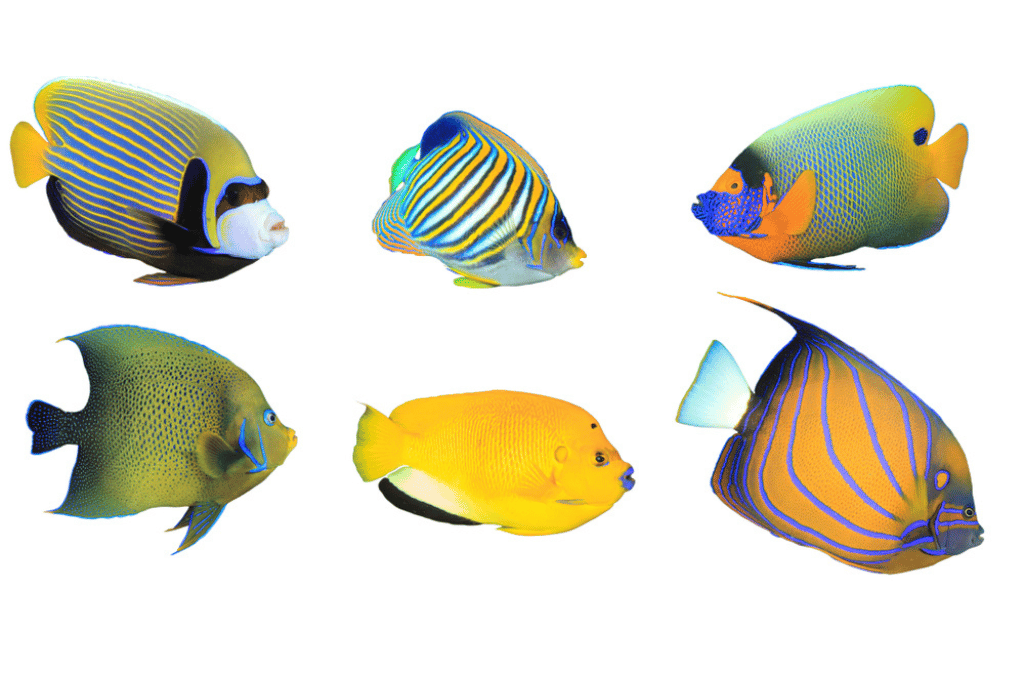
Frequently Asked Questions Of Saltwater Fish Angelfish
How Many Saltwater Angelfish Should Be Kept Together?
Keep one saltwater angelfish per tank to avoid aggression. In large tanks, two or three of different species might coexist.
Are Saltwater Angelfish Hard To Keep?
Yes, saltwater angelfish can be hard to keep. They need stable water conditions and a specific diet. Proper tank maintenance and care are crucial for their health.
What Size Tank Do I Need For 2 Angelfish?
A 30-gallon tank is ideal for 2 angelfish. This size provides ample swimming space and maintains water quality.
How Big Do Saltwater Angelfish Get?
Saltwater angelfish typically grow between 8 to 12 inches in length. Some species can reach up to 18 inches. Regular tank maintenance and a balanced diet promote healthy growth.
Conclusion
Angelfish captivate with their vibrant colors and graceful swimming. They’re a stunning addition to any saltwater aquarium. Understanding their needs ensures they thrive and showcase their beauty. Embrace the joy of keeping these exquisite fish and enhance your underwater world with angelfish.
Happy fishkeeping!



